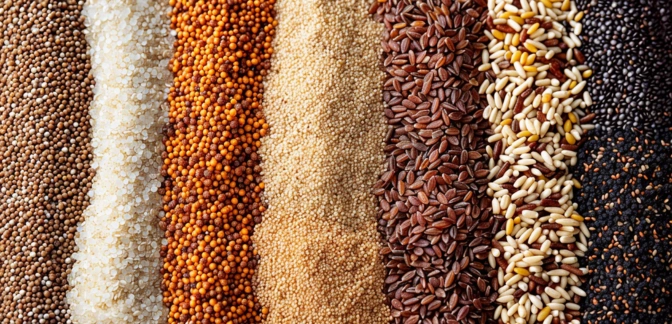Grits — Nutrients, Health Benefits, and Shopping Tips

Written by Listonic Team
Last update on September 6, 2024
Grits nutrients
Nutrition facts
Amount per 100 g
Calories
🔥 360 kcal
| Nutrients per: 100 g | Value | % Daily Value* |
|---|---|---|
| Carbs | 77 g | 28% |
| Fiber | 2 g | 7.14% |
| Sugars | 1 g | 2% |
| Glycemic Index | 70 | - |
| Protein | 9 g | 18% |
| Sodium | 7 mg | 0.3% |
| Total Fat | 2 | 2.56% |
*The % of Daily Value (DV) tells you how much a nutrient in a serving of food contributes to a daily diet. 2,000 calories a day is used for general nutrition advice.
2 g
🥕 Low Fat Content
1 g
🍏 Low Sugar Content
Grits facts & tips
Health benefits
- Provides sustained energy from complex carbohydrates, making them a good source of fuel for the body and brain.
- Contains essential vitamins and minerals such as iron and B vitamins (if enriched), which support overall health and well-being.
- Low in fat, making them a healthy option for weight management.
- Versatile and easy to prepare, making them a convenient addition to a balanced diet.
Health risks
- High carbohydrate content particularly in grits made from refined cornmeal, which can cause rapid spikes in blood sugar levels, particularly concerning for diabetics.
- Low nutrient density as refined grits offer limited vitamins or minerals compared to whole grain options.
- Potential for high sodium content in pre-seasoned or flavored grits, which can contribute to hypertension and increased cardiovascular risks.
- Potential for added fats in prepared grits made with butter or cheese, which can raise cholesterol levels and increase the risk of heart disease.
How to choose grits
Grits should be uniform in texture and have a natural, creamy color. They should be free from any debris or foreign particles, ensuring their purity and quality for cooking.
Avoid grits that are discolored or have a musty smell, as these are signs of moisture exposure or poor storage conditions. Packages that are open or have been compromised should also be avoided, as they could lead to a poor cooking experience.

How to store grits
Grits should be stored in an airtight container in a cool, dry place. Proper storage maintains their quality and extends their shelf life for up to a year, ensuring they stay fresh.
Exposure to moisture can cause grits to clump and spoil. Avoid storing near heat sources or in humid environments. Ensuring the container is tightly sealed keeps them free from pests and maintains their texture.
✅ Extra Tip
How long do they last?
Grits can last for 1-2 years when stored in an airtight container in a cool, dark place. Proper storage helps maintain their quality and flavor, ensuring they are always ready for a hearty breakfast. Cooked grits should be consumed within 3-5 days if kept in the refrigerator.
What to do with leftovers?
Leftover grits can be used in a variety of savory and comforting dishes. Reheat them and serve with cheese, butter, or gravy for a quick and easy side dish, or mix them into a casserole with vegetables, meat, and cheese. Grits are also great when used as a base for shrimp and grits with sautéed shrimp, garlic, and butter.
Use grits in a grits cake by chilling them until firm, then slicing and frying until crispy, perfect for serving with eggs or as a side dish. If you have a lot of grits, consider making a batch of cheesy grits by stirring in cheddar, Parmesan, or cream cheese for added richness. Grits can also be mixed into a grits casserole with sausage, eggs, and cheese, or used as a topping for grits pie with a savory filling. For a quick snack, enjoy grits with a drizzle of honey or maple syrup, or mix them into a bowl of yogurt with fresh fruit and nuts.
👨⚕️️ Medical disclaimer
Discover products from other categories
Listonic Team
Fact-checked
Our editorial team checked this article to make sure it was accurate at the time of publishing it.
Get the top-rated shopping list app







